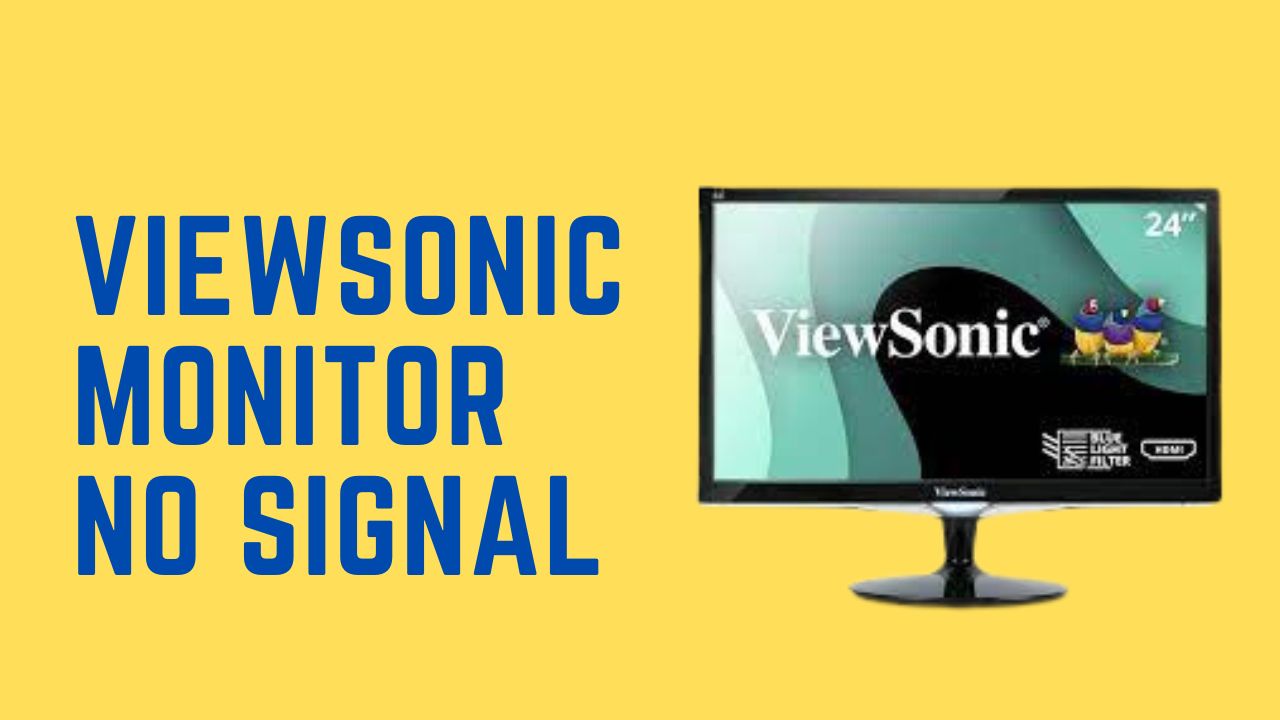If you’re seeing a “No Signal” message on your ViewSonic monitor, it can be frustrating, especially when you’re unsure of the cause. This issue is often related to connectivity or configuration problems that can usually be solved with a few simple steps. Let’s dive into the reasons why your ViewSonic monitor might be displaying “No Signal” and how you can quickly fix it!
1. Check Your Video Cable Connections
A loose or faulty cable is one of the most common causes of the “No Signal” error.
How to fix it:
- Secure the cable connections: Make sure the video cable (HDMI, DisplayPort, VGA, or DVI) is securely connected to both your monitor and your computer.
- Check for cable damage: Inspect the video cable for visible damage like fraying or bent pins. If you spot any damage, replace the cable.
- Test with a different cable or port: If everything looks good, try using a different video cable or connecting to a different video output on your computer. For instance, switch from HDMI to DisplayPort or try a different HDMI port.
2. Ensure the Correct Input Source is Selected
Sometimes, the monitor might be set to the wrong input source, preventing it from detecting a signal.
How to fix it:
- Use the monitor’s input button: Most ViewSonic monitors have an “Input” or “Source” button. Press this button to cycle through the available input sources (HDMI, DisplayPort, VGA, etc.) until you find the correct one.
- Check your PC’s display settings: On your computer, press Windows + P to open the display options. Make sure the monitor is set to Duplicate or Extend, depending on how you want to use it.
3. Restart Your Devices
A quick restart can often fix a no-signal issue caused by a temporary glitch.
How to fix it:
- Turn off the monitor and computer: Unplug both devices from the power source.
- Wait for 30 seconds: This clears out any residual power that might be causing issues.
- Reconnect and turn on: Plug the monitor and computer back in and power them on to see if the issue is resolved.
4. Test with a Different Device
If you’re still getting the “No Signal” message, it’s important to rule out whether the problem lies with your monitor or your computer.
How to fix it:
- Connect to another device: Try connecting your ViewSonic monitor to a different computer, laptop, or gaming console. If the monitor works with another device, the issue might be with your original computer.
5. Update or Reinstall Graphics Drivers
If your ViewSonic monitor isn’t getting a signal, it might be due to outdated or corrupted graphics drivers on your computer.
How to fix it:
- Connect your computer to another working monitor: If possible, use another monitor temporarily.
- Update the drivers:
- Press Windows + X and select Device Manager.
- Expand Display adapters, right-click your graphics card, and select Update driver.
- Choose Search automatically for drivers and follow the prompts to install any available updates.
- Reinstall the drivers: If no updates are available, you can also uninstall the current drivers by selecting Uninstall device under Display adapters and then reinstalling them from the manufacturer’s website.
6. Check for Overheating or Dust Buildup
Sometimes, a monitor can stop receiving a signal due to overheating or accumulated dust in the system.
How to fix it:
- Let the monitor cool down: If your monitor feels hot to the touch, turn it off and let it cool for a few hours.
- Clean the inside: If you’re comfortable doing so, carefully disassemble the monitor to remove any dust using a can of compressed air. Dust can cause internal overheating or poor connectivity.
7. Try a Factory Reset
If nothing else works, resetting your ViewSonic monitor to factory settings may solve the issue.
How to fix it:
- Access the on-screen menu: Press the Menu button on the monitor.
- Navigate to Factory Reset: Use the navigation buttons to scroll to the Setup Menu and find the Factory Reset option. Confirm to restore the monitor to its default settings.
8. Inspect the Graphics Card and RAM
Faulty internal components like the graphics card or RAM can prevent your computer from sending a signal to the monitor.
How to fix it:
- Check the GPU: Ensure your graphics card is seated properly in the PCIe slot and that any power cables connected to it are secure. Test the card by connecting it to another monitor or system if possible.
- Check the RAM: Open your computer case and make sure the RAM sticks are seated correctly. Remove them, clean the slots of dust, and reinsert them if necessary.
9. Disable Power Saving Mode
Sometimes, the “No Signal” message appears because the monitor is stuck in sleep or power-saving mode.
How to fix it:
- Wake the monitor: Try moving your mouse or pressing a key on your keyboard to wake the monitor from sleep.
- Change power settings: On your computer, go to Settings > System > Power & sleep and set the Sleep and Display off timers to prevent the monitor from entering sleep mode too quickly.
10. Contact ViewSonic Support
If you’ve tried everything and your monitor still shows “No Signal,” there could be a more serious internal hardware issue. In this case, it’s best to contact ViewSonic support or take the monitor to a professional technician for repair.
The “No Signal” message on your ViewSonic monitor can be frustrating, but with these troubleshooting steps, you can likely fix the issue quickly. Start with the basics, like checking cables and input sources, then work your way through more advanced solutions like updating drivers or testing with another device. If all else fails, don’t hesitate to reach out to ViewSonic for additional support.
Related Post: Gigabyte monitor shows no signal
